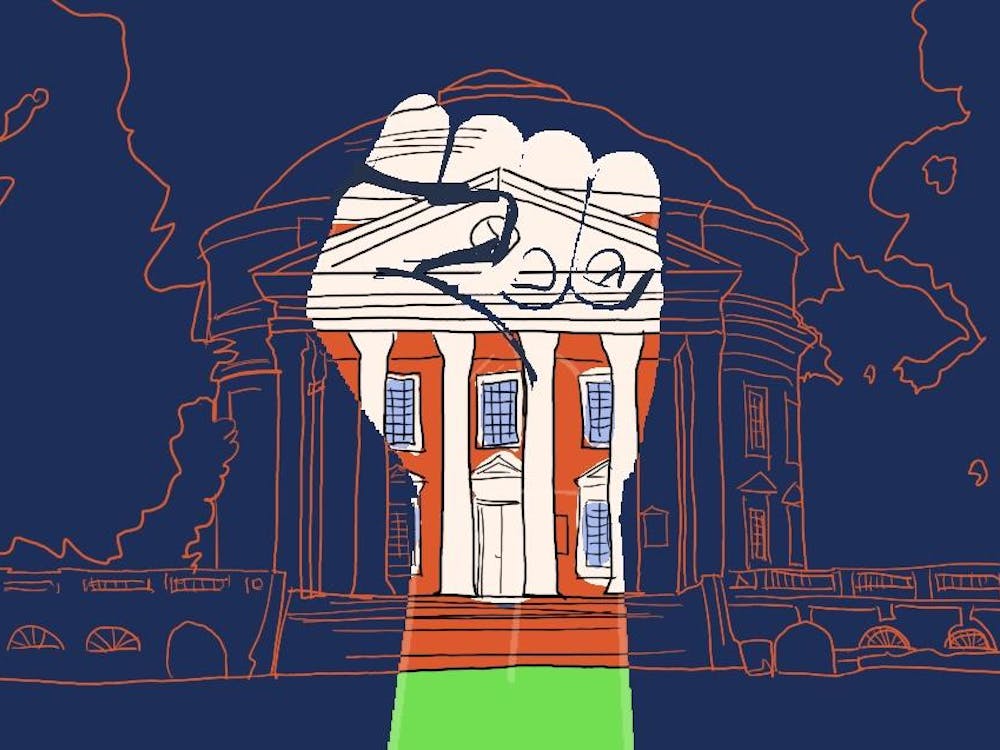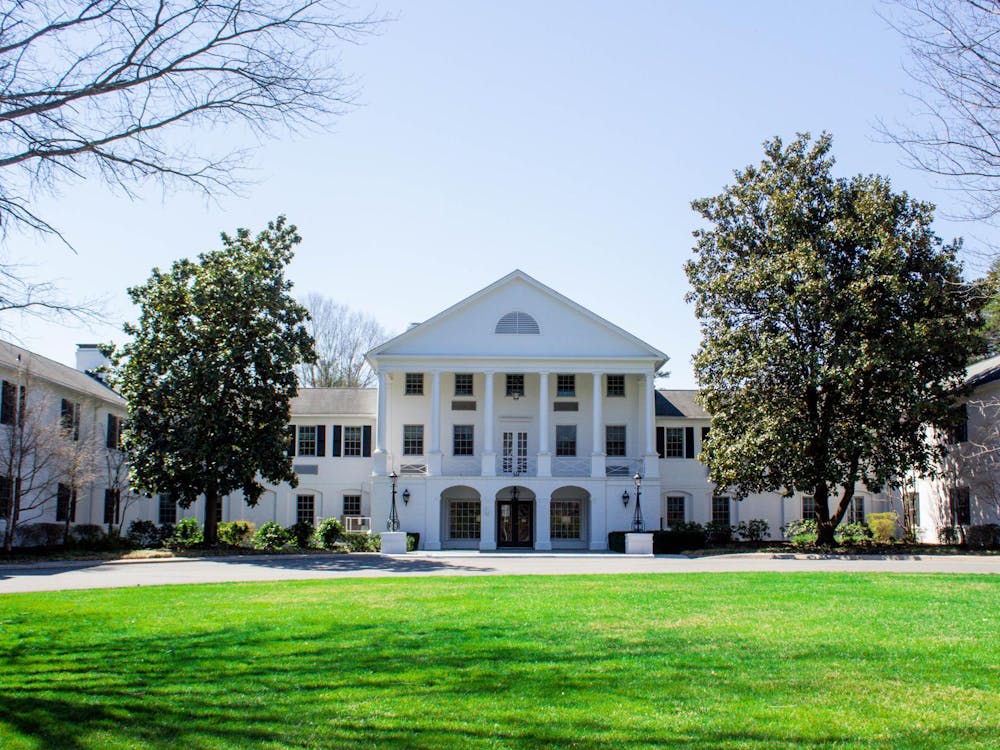Actions speak louder than words.
The old cliche held true once more as 400 or more students silently marched on The Cavalier Daily last Wednesday in order to air their grievances. Rioting and slander were not options. Violence was not necessary. Rather, leaders of the Griot Society and the Black Student Alliance rallied members and supporters in an almost poetic act to show their discontent. Organizers of the silent march realized that violence would not solve their problems, but neither would just sitting around and talking about them. The efforts of these student groups as well as their fellow concerned community members should be applauded. Rallying hundreds of students together to support a cause is one thing, but to use an innovative, nonviolent method in order to clearly show discontent is beyond impressive. It is beautiful.
The student body here at the University is hardly apolitical -- as proved by the recent 'Rock N Rally' and the voter drive by the University Democrats. With our ideals of self-governance and the wealth of student-run organizations across Grounds, it is surprising that we aren't just as highly involved when things do not go our way. Protests are not a common occurrence here at the University. We have lost the passion once harbored by students in the 60s -- the idea that we need to take action in order to fix something we disagree with.
Protests of many forms come to the University. One of the most recent was the National Day of Silence. This event began at the University in April of 1996 and its success inspired it to become a national event. The Day of Silence brings together students of all sexual orientations with the purpose of standing up for those who have been silenced through prejudice, hatred and oppression. The day is aimed in part toward educating the heterosexual community in regard to the issues faced by homosexuals. Participants hand out business-sized cards explaining their silence and what they are taking a stand against. The event's unusual silence inspires crucial discussions about what can be done to end this practice of discrimination. Unfortunately, University students chose to end this form of protest last year, citing a better acceptance of the gay and lesbian community and less of a need to be inconvenienced by not speaking for an entire day ("University Fails to Participate in Day of Silence," The Cavalier Daily, April 12, 2002). This event is yet another act of nonviolent passionate protest lost to student complacency.
Luckily, 400 of our fellow students recognized their discontent with situations at the University and acted on their disgust and anger in a peaceful and poignant manner. "We thought a silent march would be the most effective form of protest," explained Tyler Scriven, President of the BSA. "We wanted to come together with one voice and one individual presentation and the best way to do that would be to have one person speak and the other 400 show support." By marching in a respectful silence, students were able to draw attention to the issue at hand, not sidetracking it through a need to act maliciously or violently.
Their discontent was apparent as 400 students flooded the University streets and ended up in Newcomb Hall without uttering a word. Their actions were noted and respected as they took a unique and respectful approach to begin to remedy an upsetting situation. As these students proved, anger and violence are not necessary to get your point across. Using a silent march showed not only how many students were passionate about the situation at hand, but that they were willing to be calm and reasonable when looking for solutions.
The idea of a silent march is not a new one, as this was a popular form of protest in the Civil Rights Era. "I pulled this silent march idea from Civil Rights History," Scriven said. "I thought it was the best idea in seeing how effective they were back then through their silence and peacefulness." Indeed, the situation was reminiscent of another silent march, which took place in July of 1917 in New York City. The protest was organized by Harlem religious and civic leaders and the National Association for the Advancement of Colored People in order to show their discontent with violence against African-Americans around the country. Thousands of New Yorkers watched as the parade took place in complete silence. This action showed that violence was not the way to solve the racial tensions within the United States, and our fellow University students took this same approach last Wednesday evening.
A calm, rational approach is always the best way to solve a problem. Violence is never an option. Thankfully the Griot Society, the Black Student Alliance and their fellow supporters recognized the importance of nonviolent action and took it last Wednesday night. Silent marches are a smart way to showcase discontent and to avoid the potential for violence or rioting.
(Alex Roosenburg's column appears Mondays in The Cavalier Daily. She can be reached at aroosenburg@cavalierdaily.com.)






